This might be the oldest and simplest LCD screen, model 1602A. It is a product from the 1980s, yet it remains very popular and can be seen in many devices today.
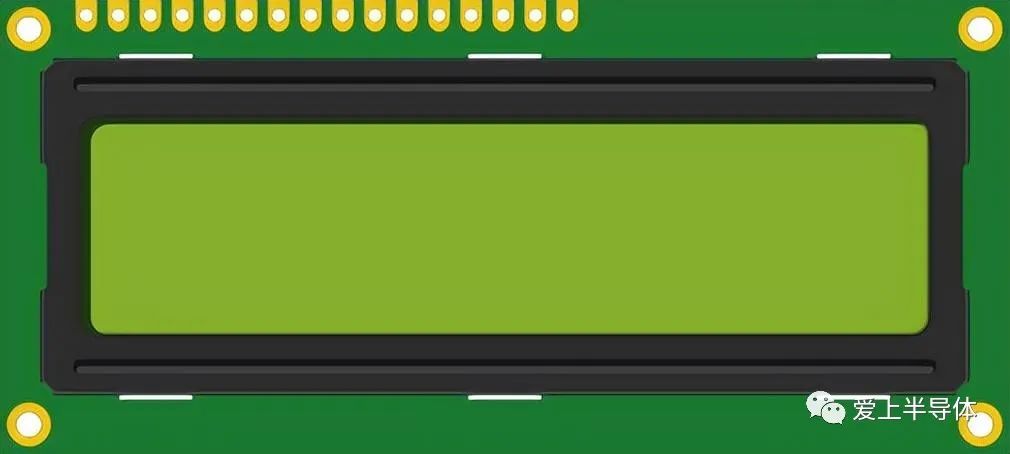
Next, let’s discuss how this screen works.
This is the pattern it displays. If we zoom in, we can see that its pixels are small squares.
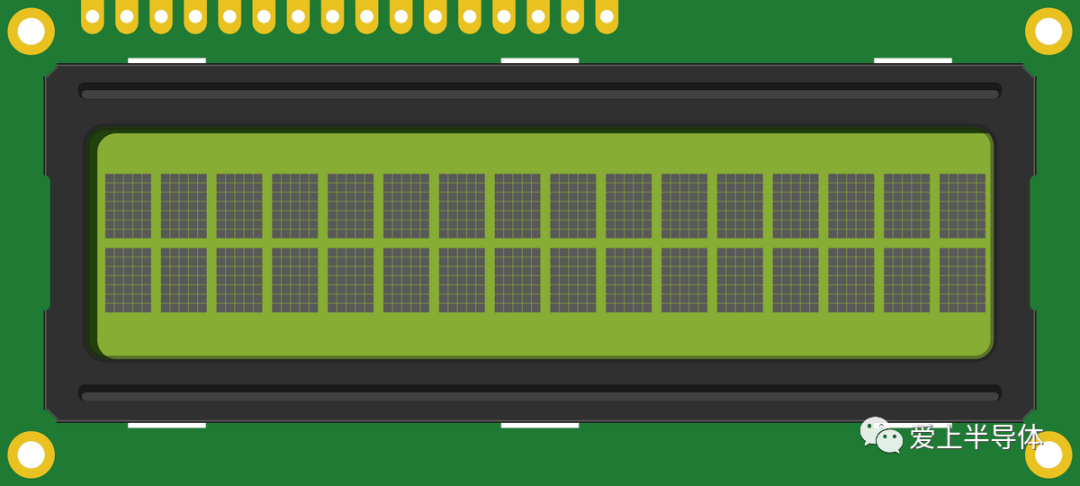
If we let all its pixels display, it looks like this.
It has 16 such areas horizontally and 2 vertically, thus the model number 1602.
Each area has 5 pixels horizontally and 7 pixels vertically, totaling 35 pixels per area, making 1120 pixels for the entire screen.
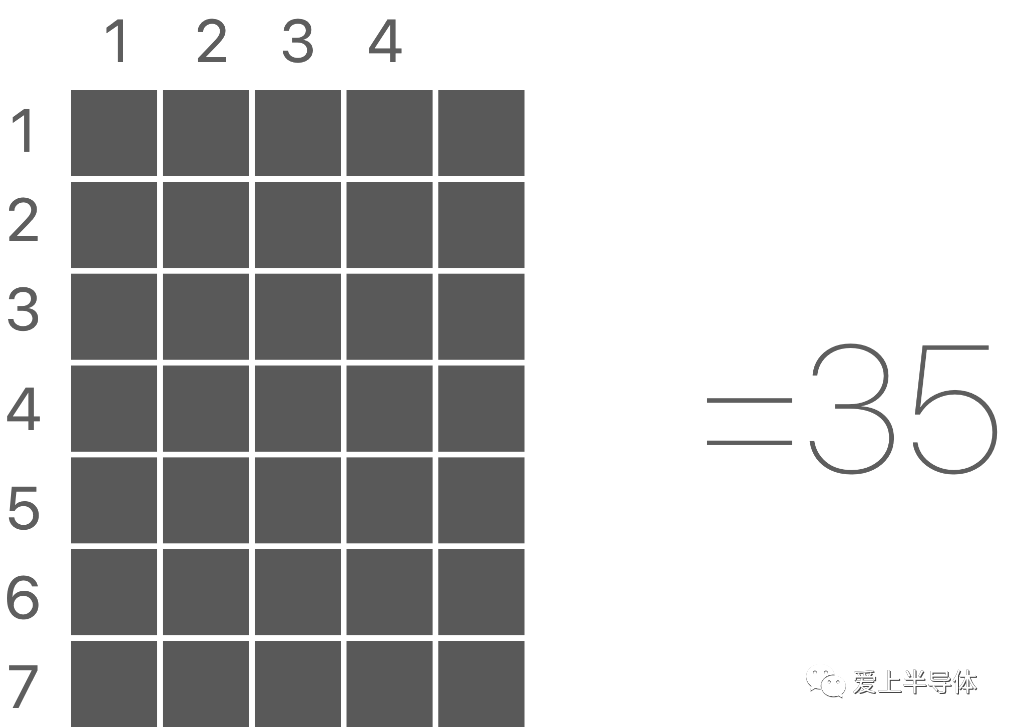
So how does this thing control over 1000 pixels?
To understand this, we first need to know how a single pixel is controlled.
At the bottom of the screen is a layer of LED backlight. When we power it, it lights up.
Above it is a layer of liquid crystal, with each pixel controlled by a small piece of liquid crystal.
When we do not apply voltage to the liquid crystal, it is nearly completely transparent.
When we apply voltage to a small piece of liquid crystal, it becomes opaque, forming a small black dot, which is the pixel we see.
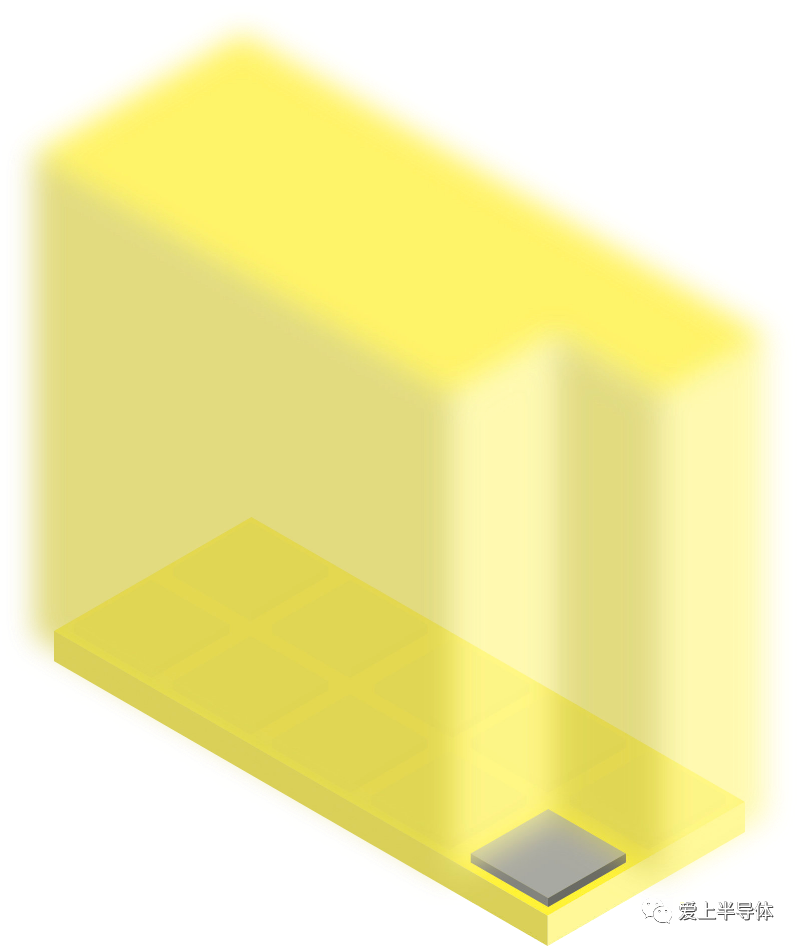
Since color display is not needed, we only need to control the liquid crystal between transparent and opaque states by adjusting the high and low voltage, thus controlling a pixel.
Controlling a single pixel is simple; we can directly control the voltage of the liquid crystal using the microcontroller’s pins.
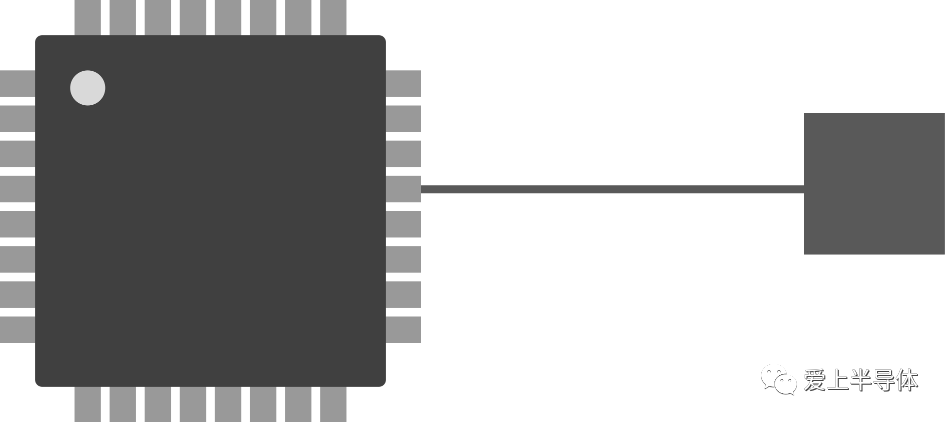
However, controlling 1120 pixels is beyond the capability of a microcontroller.
Because the number of pins on a typical microcontroller is limited, it cannot control over 1000 liquid crystals.
To address this issue, clever humans developed a display chip, the HD44780U, which has 80 pins.
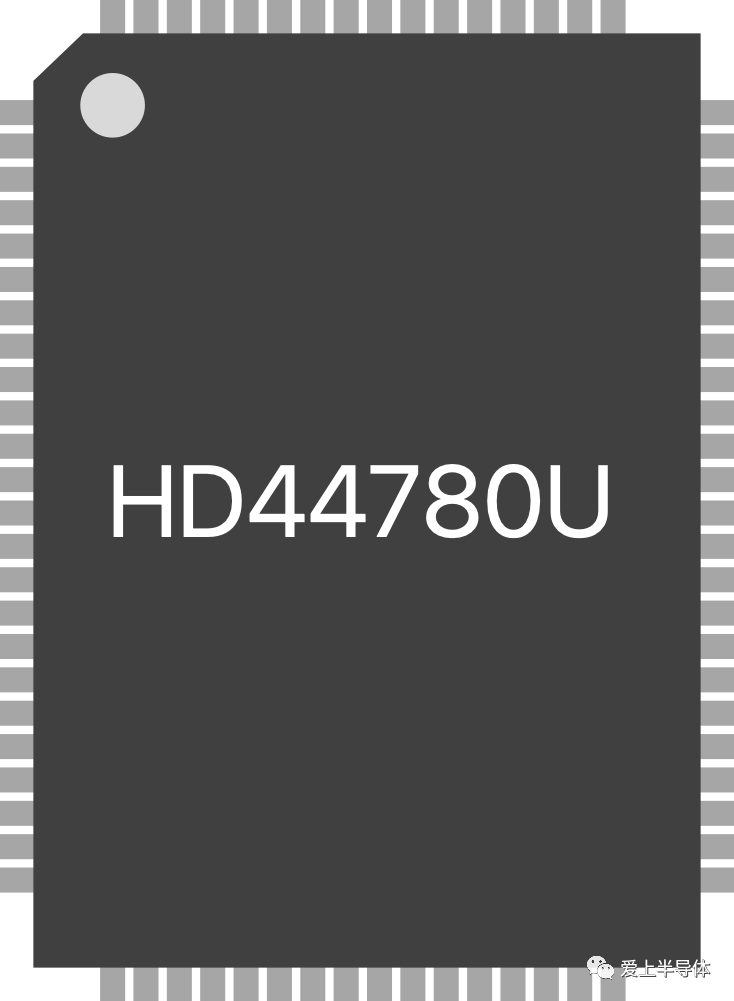
This way, we only need to send the data to this chip, and it can control the LCD screen’s pixels, greatly simplifying our programming task. To put it more visually, this display chip acts like the graphics card in a computer.
Looking at the back of the 1602 screen, the large black dot encapsulates the HD44780U chip. This type of packaging saves costs.
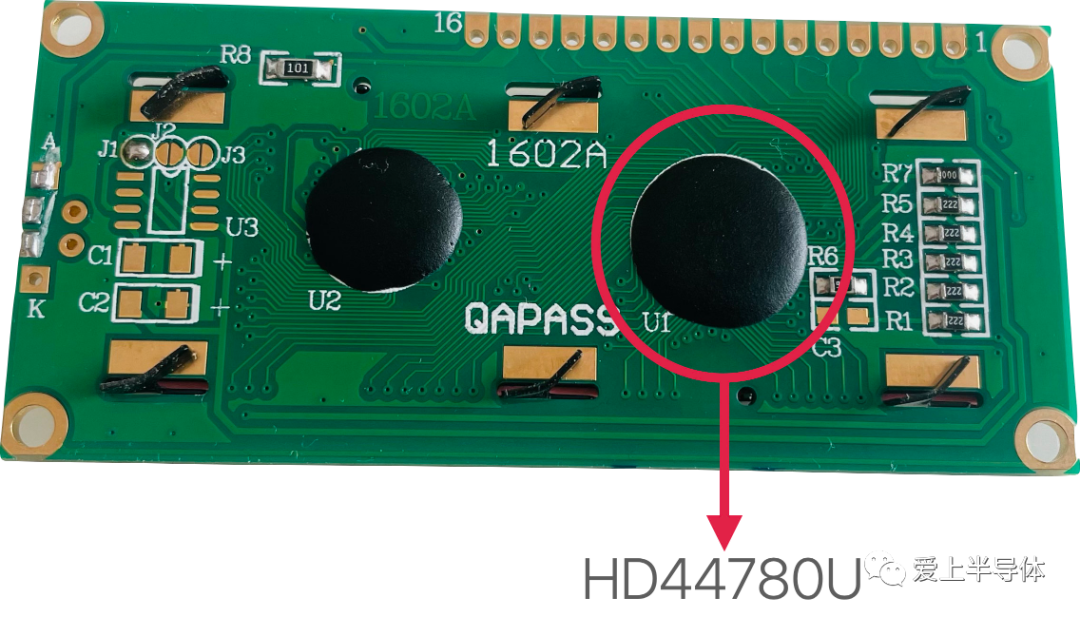
The 1602 has 16 pins, 8 of which are data pins.
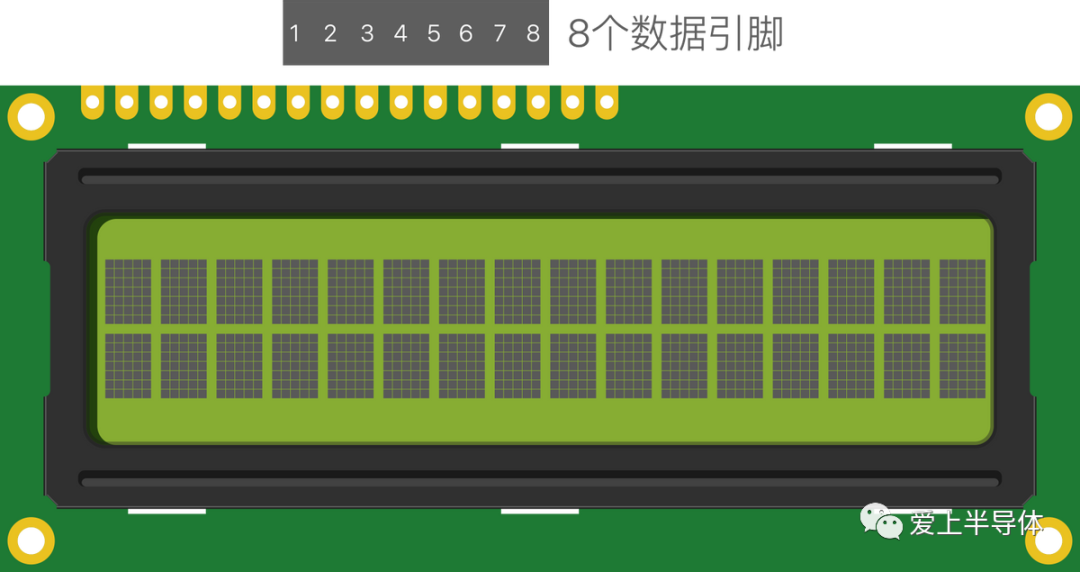
Through these pins, we can control the LCD screen.
Since each area only has 35 pixels, it can only display simple information such as numbers, letters, and symbols, totaling 240 characters. It cannot display Chinese characters.
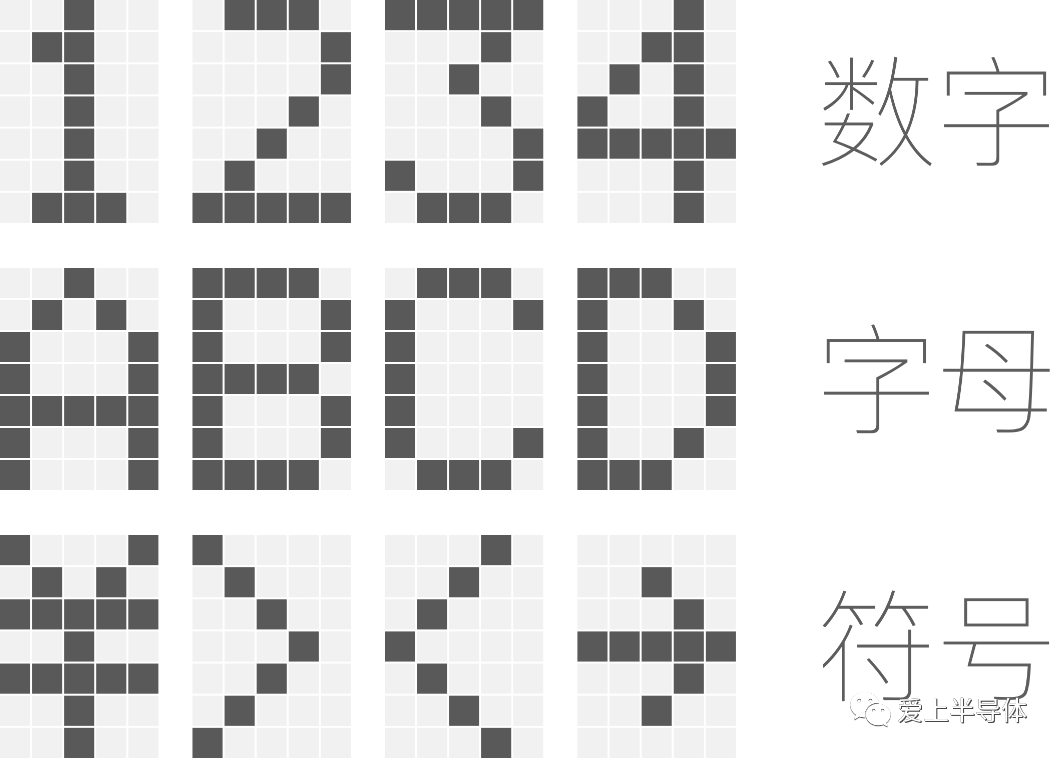
These characters are basically encoded using ASCII codes, which can be represented by an arrangement of 8 bits of 0s and 1s.
For example, the ASCII code for uppercase letter A is 0100 0001, so we only need to make the microcontroller’s 8 pins output the corresponding high and low levels.
However, we have not specified which area the uppercase letter A should be sent to.
Therefore, the HD44780U has designed a byte-sized DRAM (memory) for each area, which is equivalent to the video memory in our current graphics cards. For comparison, Nvidia’s latest flagship graphics card, the 4090, has 24GB of video memory.
This display chip has only 80 bytes in total. It can display 40 characters horizontally and 2 characters vertically, thus controlling 80 characters simultaneously.
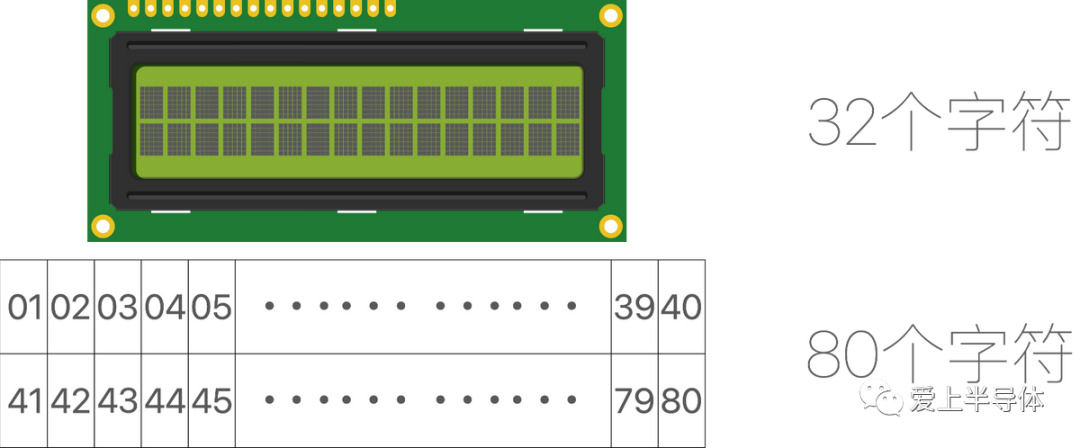
We see that the LCD screen can display only 32 characters, so why can this chip control 80 characters?
Because the HD44780U chip is a general-purpose chip, not just for this specification of screen.
If used to control the 1602, its video memory will always have 48 bytes unused.
Before the microcontroller sends data to it, it must first send the memory address, followed by the data, so that the data will be saved in the corresponding memory.
For example, if we want the first area to display A, we need to first send the address of the first memory, and then send the ASCII code for A. This way, A will be displayed in the first area.

This is our programming thought process with the microcontroller. The existence of this display chip makes programming much simpler.
Now, how does this display chip control the LCD screen?
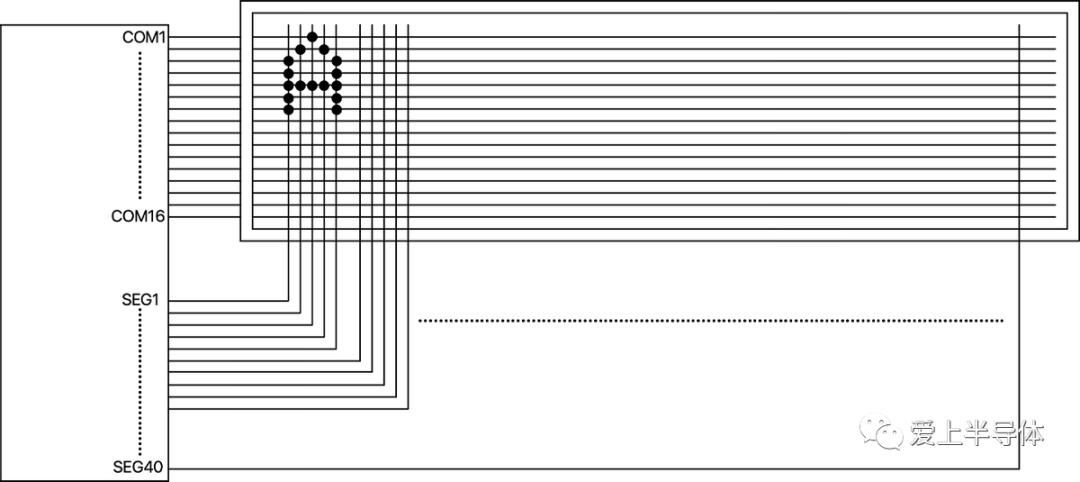
This is the pin distribution of the HD44780U. The pins that directly control the liquid crystal pixels are these pins. The COM pins control the horizontal pixels, while the SEG pins control the vertical pixels. For example, to control the character A, these pins need to output different voltages.
But there is still a problem. Taking the first area as an example, these pins cannot control each pixel simultaneously.
For instance, when controlling the first row, we first set the COM pin to low voltage. Then we can control its SEG pins to manage the pixels of the first row. If we want to display a pixel, we give this pin high voltage; if not, we give it low voltage.
However, at the same time, we cannot control the pixels of other rows. Therefore, people came up with a scanning control method, where we control the pixels row by row, thus managing all pixels.
Doesn’t that mean our eyes see it scanning continuously?
Of course not. This uses the persistence of vision; the scanning frequency is very fast, so what we see is a still image.
But there is still a problem. It has 40 SEG pins, and each character has 5 vertical pixels. This means it can only control 8 vertical areas. So how can it control the other half of the area?
Earlier, we mentioned that it has 80 bytes of built-in video memory, so it should be able to control 80 characters, right?
It can indeed control 80 characters, but if it exceeds 16 characters, there are no extra pins available, so it must rely on driving circuits.
Look at the back of the 1602; besides the main control HD44780U, there is also a driving chip, the HD44100H, which assists the main control in completing the other half of the display task.
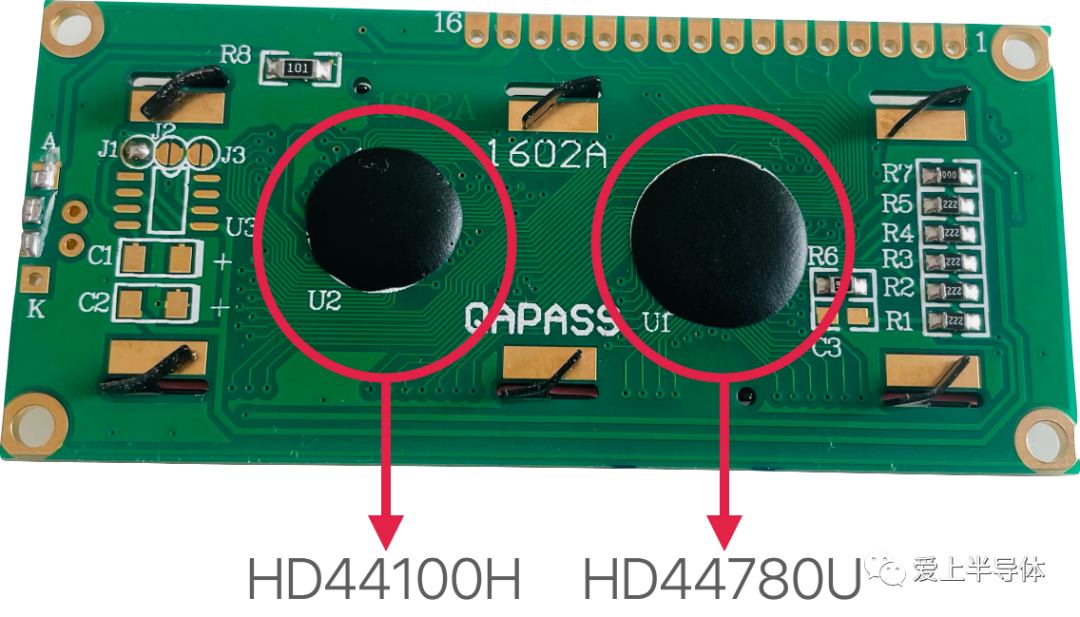
This is its pin distribution, which also has 40 SEG pins.
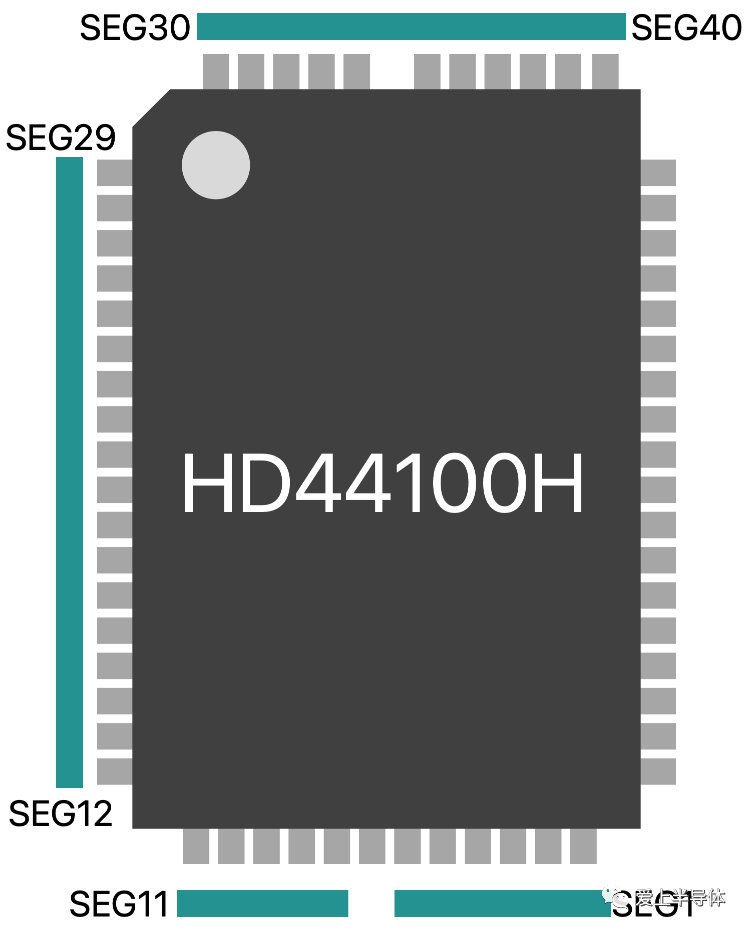
Connecting it with the main control allows us to control all the pixels of the LCD.
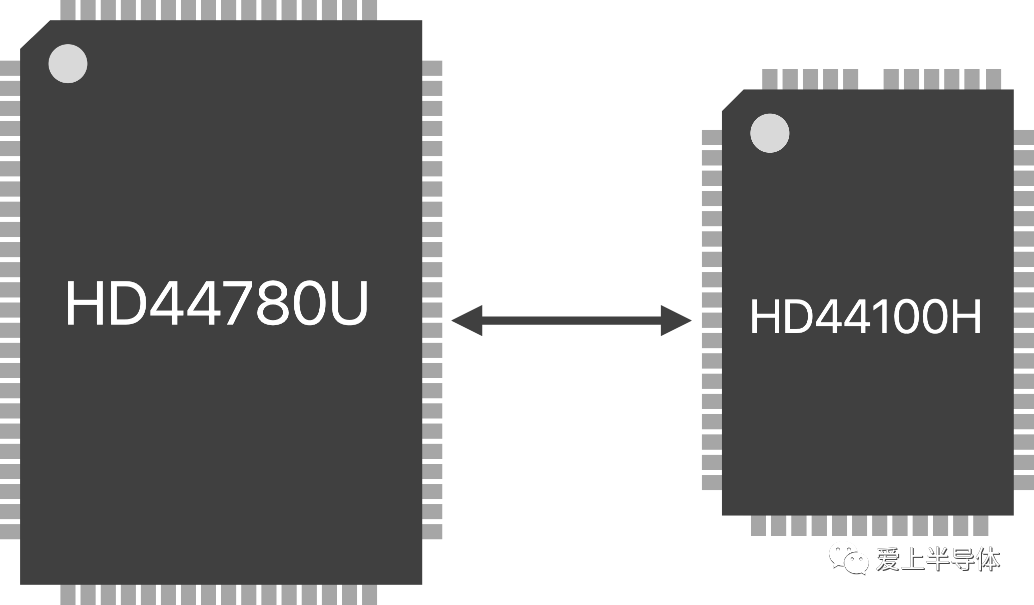
The main control sends information to this driver chip in a serial manner, and then this driver chip can control the state of its pins.
Now, it can control exactly 32 characters.
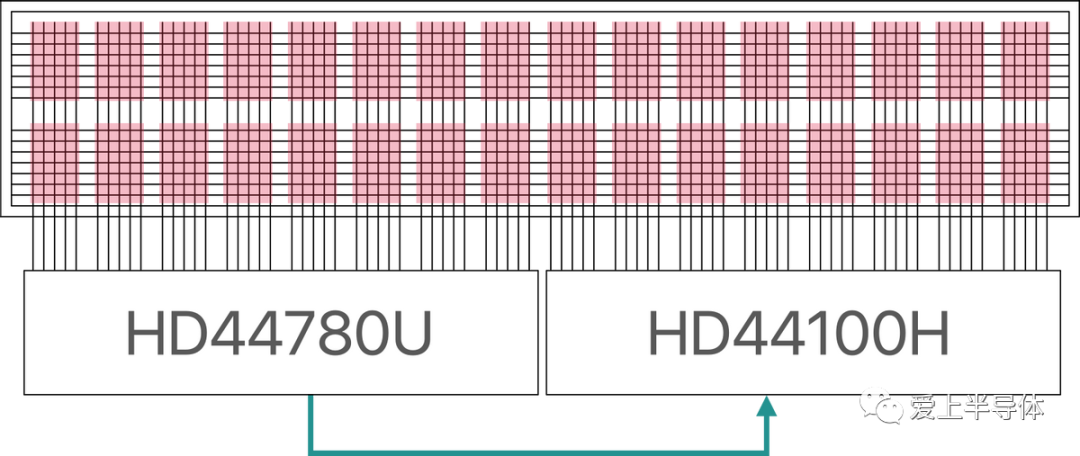
If we add 3 more driver chips and replace it with an LCD that can display 80 characters, it can control 80 characters.
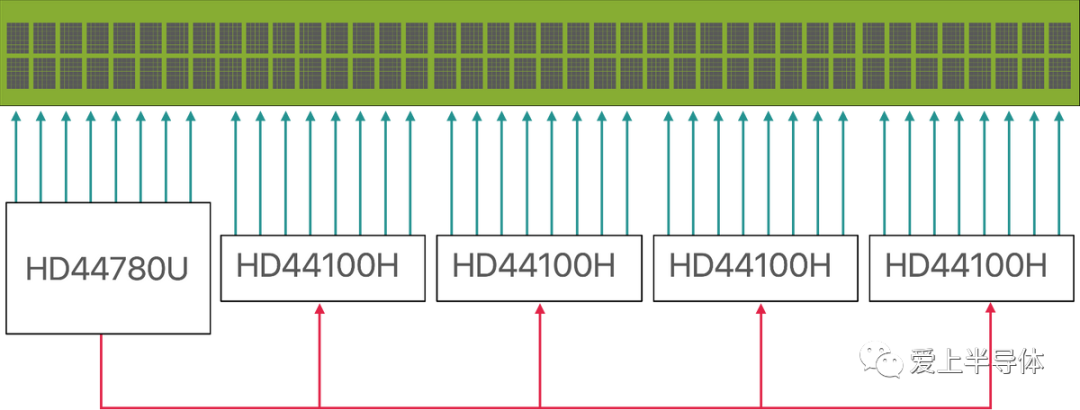

At this point, the performance of the HD44780U display chip is fully utilized; it cannot control even one more pixel because its video memory is already full.
This is my understanding of the 1602 screen, and I hope it helps you.